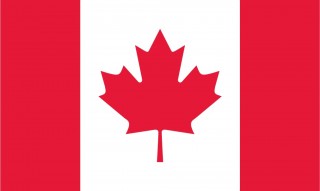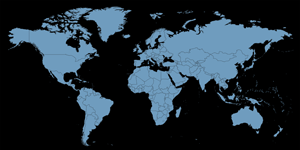Global Issues


Canada
• 171 female prostitutes were murdered between 1991 and 2004. About 45% of those cases went unsolved, a Statistics Canada 2006 report found.
• More than 520 aboriginal women missing or been murdered in Canada in the last four decades.
• More than 340 are murder cases. 45 per cent are unsolved.
• 1996 report found Canadian aboriginal women between 25 and 44 years old are five times more likely than non-aboriginal women to die of violence.
• 35% of aboriginal women have suffered physical violence. Slightly fewer than one in three report being victims of severe violence including sexual violence.
• Aboriginal women are eight times as likely as non-aboriginal women to be victims of spousal homicide.
• B.C. Centre for Excellence in HIV/AIDS report found aggressive policing increased likelihood of future violence.
• Canada is a source, transit, and destination country for men, women, and children subjected to sex trafficking and forced labor.
• Canada is a source country for child sex tourists.
• Canadian women and girls, particularly from aboriginal communities, are found in conditions of commercial sexual exploitation across the country.
• Foreign women and children, primarily from Asia and Eastern Europe, are subjected to sex trafficking.
• Sex trafficking victims have come from China, Hong Kong, Fiji, Taiwan, South Korea, the Philippines, Romania, Ukraine, and Moldova, in addition to other countries and territories.
• Asian victims tend to be prevalent in Vancouver and Western Canada, while Eastern European victims are trafficked to Toronto, Montreal, and Eastern Canada.
• Law enforcement officials report the involvement of organized crime in sex trafficking.
• Canada’s law enforcement efforts reportedly suffer from a lack of coordination between the national government and provincial and local authorities, which prosecute most human trafficking cases.
• Women accounted for 51% of violent victimizations
• Females were over 10 times more likely than males to be victims of a police-reported sexual assault.
• Males were more likely than females to be a homicide victim, accounting for 74% of victims of homicide during a 5-year period between the years 2004 to 2008.
• Female rates of violent victimization were higher than rates for males in 10 of the 13 provinces and territories, most notably Nunavut and Northwest Territories as well as Saskatchewan.
• Females 18 to 24 years of age had the highest rate of victimization of all victims.
• Men accused in 81% of cases of violent victimization against women.
• Females were more likely than males to be victims of common assault — 576 per 100,000 females and 484 per 100,000 males.
• Physical force was more common in incidents of physical assault against female victims (54%).
• Female victims of criminal threats were six times more likely to be victimized by a spouse or dating partner than were male victims.
• From 2004 to 2008, females accounted for more than three-quarters of spousal homicide victims.
• 29% of women victimized by a current or former spouse.
• 22% were physically assaulted by someone they were currently dating or had formerly dated.
• The rate of police-reported sexual assault against females was more than 10 times the rate for males, with females accounting for 92% of sexual assault victims in Canada.
• 59% sexual assault victimizations of females occurred in a private residence.
• Female victims were about 3 times as likely to be killed out of frustration, anger, despair (21%), and nearly 4 times as likely to be the victim of a homicide motivated by jealousy (12%) or sexual violence (4%).
• Women were almost three times more likely to suffer criminal harassment than men
• In 2004, an estimated 74% of adult females who had been violently victimized did not report the incident to the police.
• Annual costs of intimate partner violence were calculated at US$1.16 billion in Canada.
Advocacy
• Walk4Justice began in Prince George to raise awareness and demand justice, closure, equality and accountability for the missing and murdered women and their families across Canada.
• Sex Professionals of Canada believes all forms of consensual adult sex work are legitimate and valid and provides a public voice that promotes the validity of sex workers’ occupation.
• Benjamin Perrin is a leading anti-trafficking activist in Canada and founder of The Future Group, an NGO dedicated to combating human trafficking and the child sex trade around the world.
• Maggie’s: The Toronto Sex Workers Action Project is an organization run for and by local sex workers. Its mission is to assist sex workers to live and work with safety and dignity.
• Stella (Montreal) has the goals of providing support and information to sex-workers so that they may live in safety and with dignity; to sensitize and educate the public about sex work and the realities faced by sex workers; to fight discrimination against sex workers; to promote the decriminalization of sex work.
• Stepping Stone (Nova Scotia) was founded in 1987 and is the only organization in the Maritimes that deals specifically with street life and sex work from a harm reduction model.
• Prostitutes of Ottawa-Gatineau Work Educate & Resist membership is open to individuals of all genders who self-identify as former or current sex workers and to allies who share its vision.
• Swan is a culturally diverse group of women working to provide culturally appropriate and language-specific support, education, research, advocacy, and outreach for trafficked, migrant and immigrant sex trade workers.
Sources: United Nations Development Fund for Women, Statistics Canada; U.S. Department of State Trafficking in Persons Report 2011; U.S. Department of State Trafficking in Persons Report 2009; Sex Work Activists, Allies and You; Winnipeg Free Press, Compiled by J. Hainsworth
